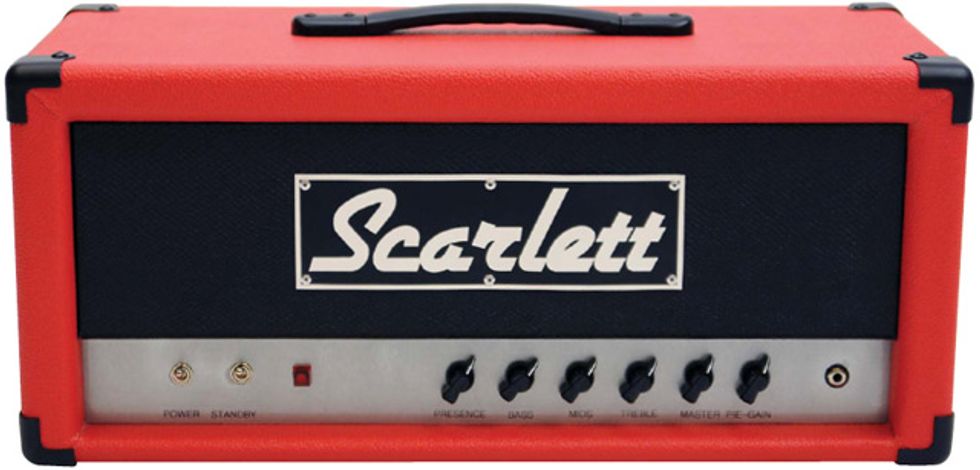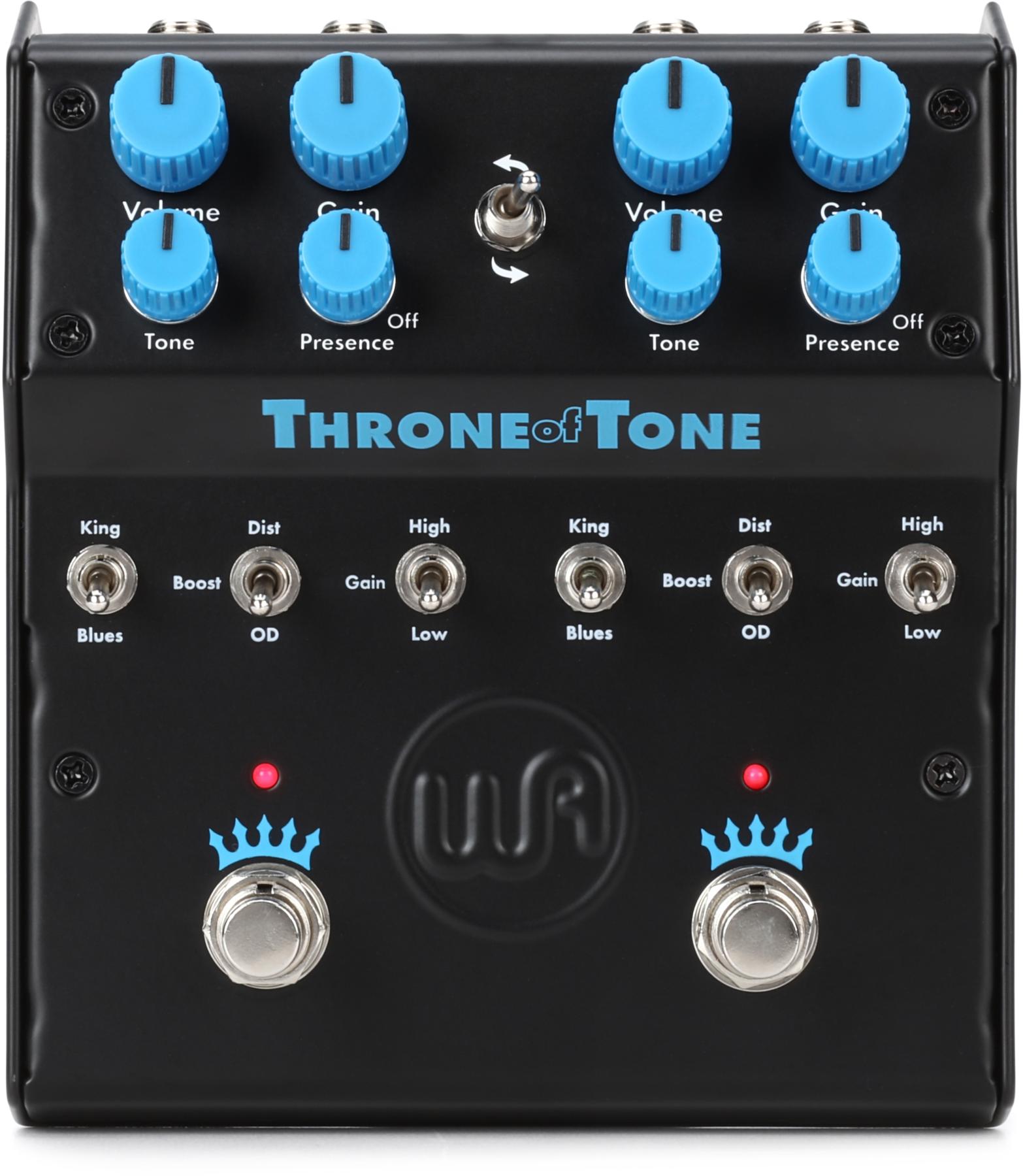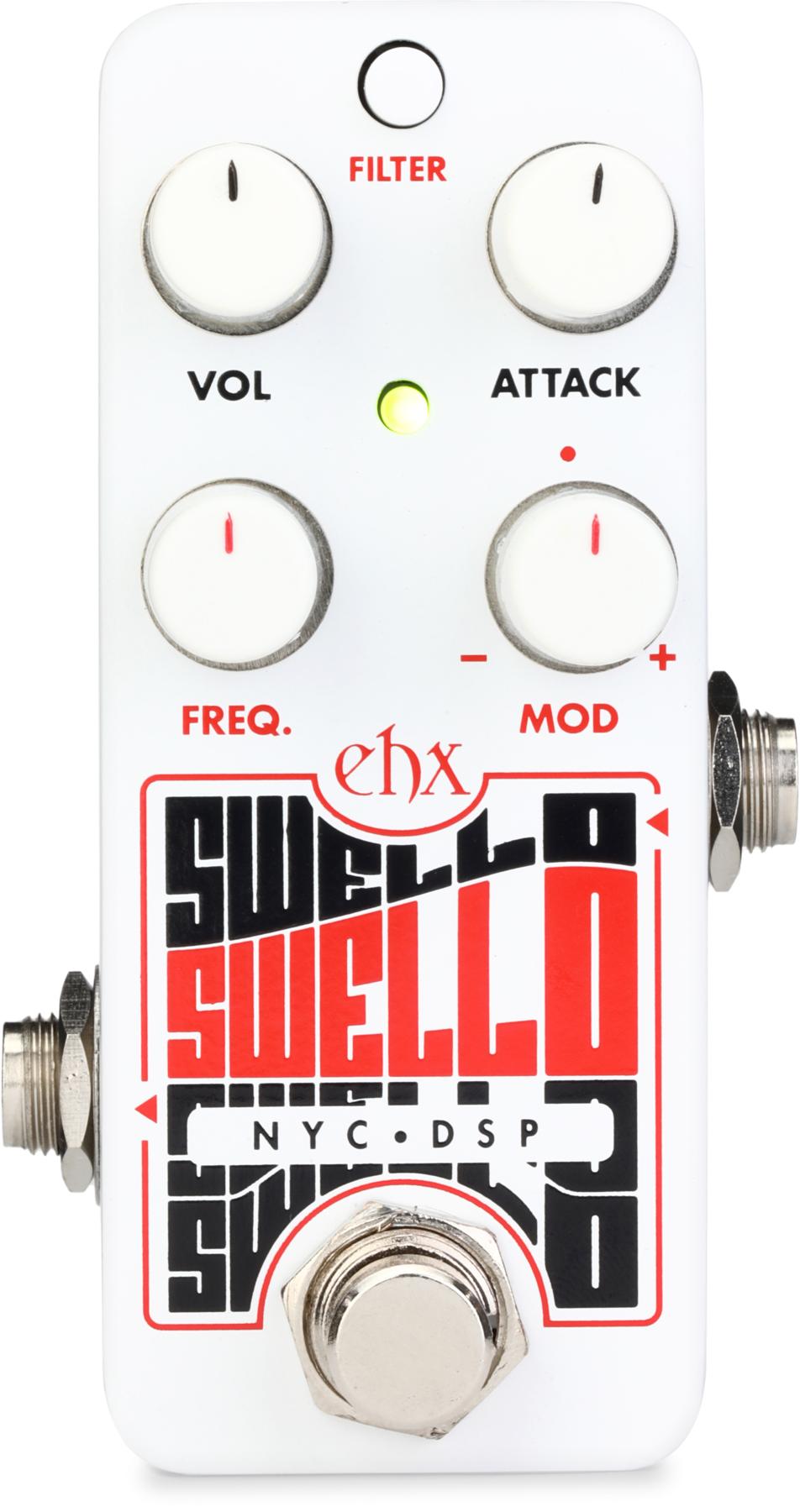I’ve owned a lot of gear over the years, and I have more than a few regrets of selling some of that equipment. One amp I kick myself for getting rid of was an early-’80s Marshall JCM800 50-watt head with forest-green vinyl covering and wheat grille cloth. With its no-frills, single-channel setup and biting, brilliant tone, it required you to hit the strings really hard to get that famous Marshall grit. I ended up trading it for a channel-switching amp because I wanted to play heavier music at the time. Ever since then, I’ve dreamt about that amp’s sound, which started my love for British-voiced amplifiers.
Scarlett Amplifiers’ Paul Marchman has very similar tastes, and this is evident in his Wildcatter 35, Lead Special, and Darkheart amplifiers. Most of Marchman’s creations are tonally influenced by Marshall amps of the late ’60s and early ’70s. But with a nod towards early-’80s Marshall JCM800s, the red vinyl-clad Screamer 70 represents a new direction for his company.
Digging In
Consisting of a simple 3-band EQ and Gain, Presence, and Master volume controls, the Screamer 70’s front-panel layout made me feel right at home. Marchman designed the Screamer 70 to be a bare-bones rock machine, so there’s no effects loop and only one input jack. The amp’s internal construction is immaculate, with a 1/8" fiberglass turret board with riveted, nickel-plated turrets.
The amplifier delivers its pummeling gain via three 12AX7 preamp tubes, which feed a muscular power section that features dual Tung-Sol 6550s. Marchman’s design also makes use of a unique presence circuit that can drastically change the amp’s tone. In most amps, the presence control affects how much negative feedback or dampening is applied to the highs and high-mid frequencies. Marchman’s design uses only the bare minimum of negative feedback. At the highest settings, there’s almost no negative feedback, which results in a major volume and gain boost. The trick is to find the right presence setting to keep the low end tight and under control. Of course, this depends on your guitar and how hard you pick, too.
Pushing It to the Limit
Like JCM800s of yesteryear, the Screamer 70 is designed to be cranked up. Back before preamps with hugely saturated gain stages were all the rage, the only way to achieve guts and definition in guitar tone was to push the amp’s power section. This approach creates a very different feel than preamp distortion and causes you to play a little differently, too.
Armed with Gibson Les Paul Custom loaded with Tom Anderson pickups—an H1 in the neck and an H3+ in the bridge—I used the Screamer 70 to drive a Bogner 20th Anniversary 2x12 into submission. As I explored higher volumes, I really started to appreciate the Screamer 70’s dynamics. The amp was very responsive to pick attack and changes in my guitar’s volume knob, and it surrendered gobs of gain, with a perfect voicing in the mids for cut and definition. It sounds and feels like a combination of a mid-’70s Orange Overdrive 120 and the aforementioned Marshall JCM800. All the grind and smooth cut reminiscent of that era of JCM800s was there, combined with the massive, squishy low end of those famed Orange heads. It’s a combination that’s perfect for huge riffs à la Kyuss, High on Fire, and early Queens of the Stone Age.
When I laid into the strings with galloping palm-muted riffs, the low end didn’t have the extreme tightness that type of playing demands. It sounded like the amp’s low frequencies were struggling to keep up and attempting to swell into the sweet bloom I’d heard earlier when playing slower, more melodic riffs. I usually throw a booster pedal into the signal chain to counteract this effect, so I pulled out my BBE Freq Boost pedal. However, I discovered that the Screamer 70 does exactly what it was designed to do no matter what you throw in front of it. The Freq Boost tightened up the sound, but the low end’s inherent tonality remained.
With its incredible range, the Screamer 70’s Presence control plays a crucial role in shaping sounds, and the amp really started to show its true colors when I maxed it out and set the Master at around 11 o’clock. This yielded huge, razor-sharp tones, and the Screamer made every pick stroke an authoritatively percussive blow to my chest. This quickly became my favorite way to run the Screamer 70.
It might be cliché to compare the nature of the Screamer 70 to an angry animal, but that’s really what it reminded me of. The high-gain tones were straight-up vicious, and the lower-gain tones weren’t really that different. The glassy highs and snarling midrange never vanished at lower gain settings, and the amp’s biting tone stayed intact throughout the whole range of its Gain knob. I was able to coax a decent clean tone out of the amp, but it was difficult to eliminate all the grit, no matter where I set the controls. Eventually, I had to back off my guitar’s volume control to approach a clean sound. This isn’t surprising, though, because Marchman says he never intended to incorporate clean sounds in the Screamer 70—he aimed to serve up the best high-gain tones he could muster.
The Verdict
As its name implies, the Screamer 70 offers a unique blend of some great British overdrive tones, but it’s not for everyone. Guitarists who love the wide-open sound and feel of a cranked Orange Overdrive 120 or an early Marshall JCM800 might be astounded at how well the compact Screamer 70 mimics aspects of both models. Other players may be turned off by the lack of a usable clean channel and the amp’s aggressive, biting voice. If you’re a high-gain player and are on the lookout for a unique-sounding amp, the Screamer 70 should be on your radar.
Buy if...
you want a lean, massive-sounding high-gain monster with a bold, aggressive voice.
Skip if...
you need clean tones or want features like an effects loop.
Rating...
Street $1825 - Scarlett Amplifiers - scarlettamps.com |




























